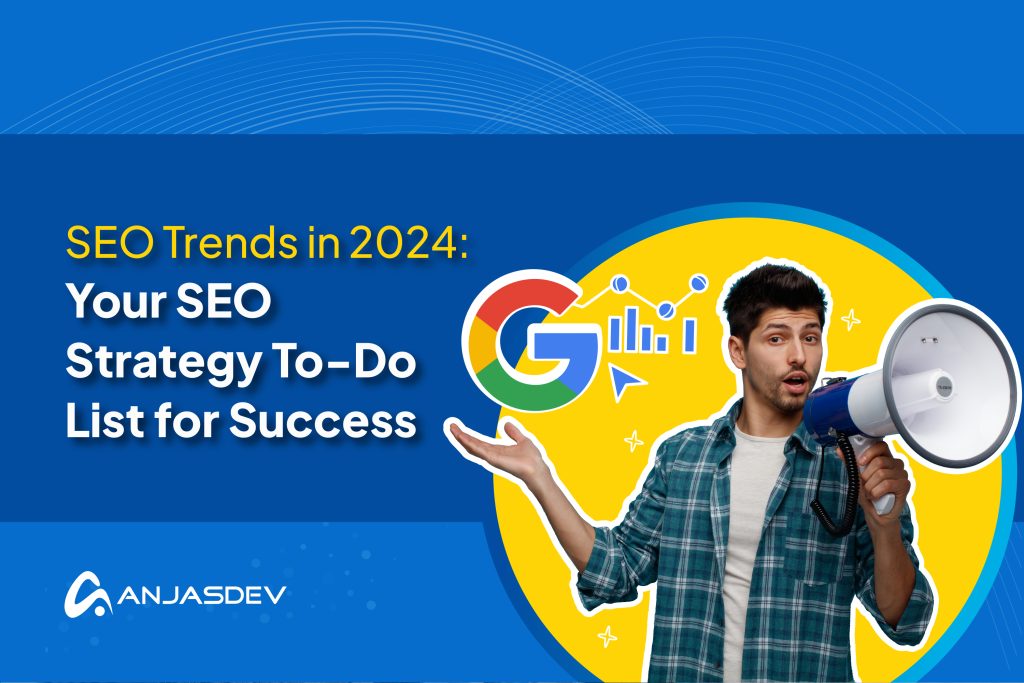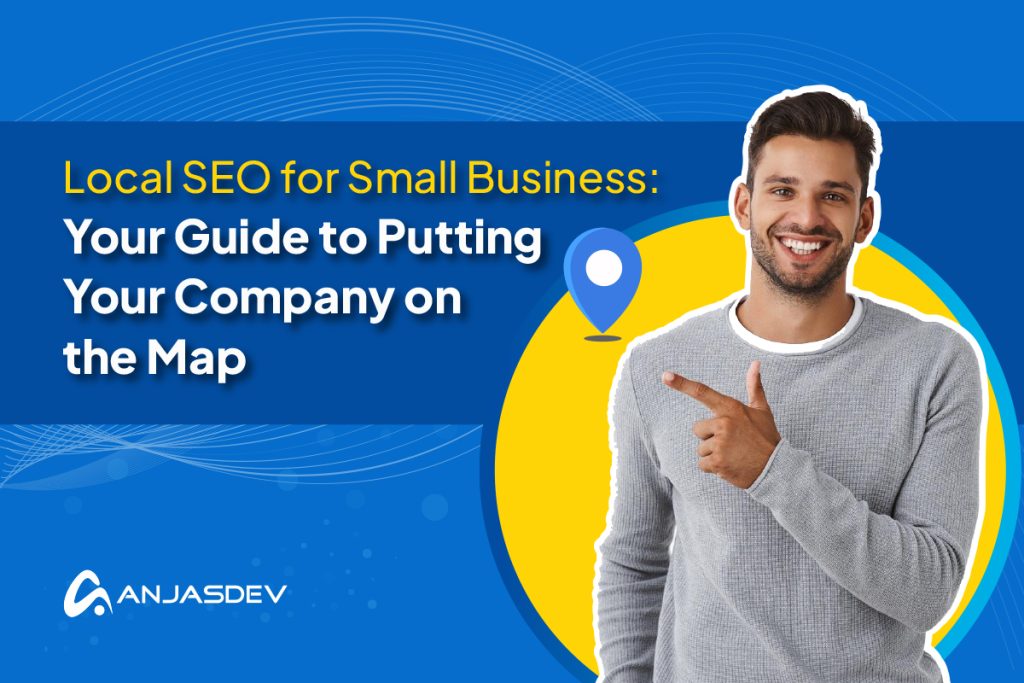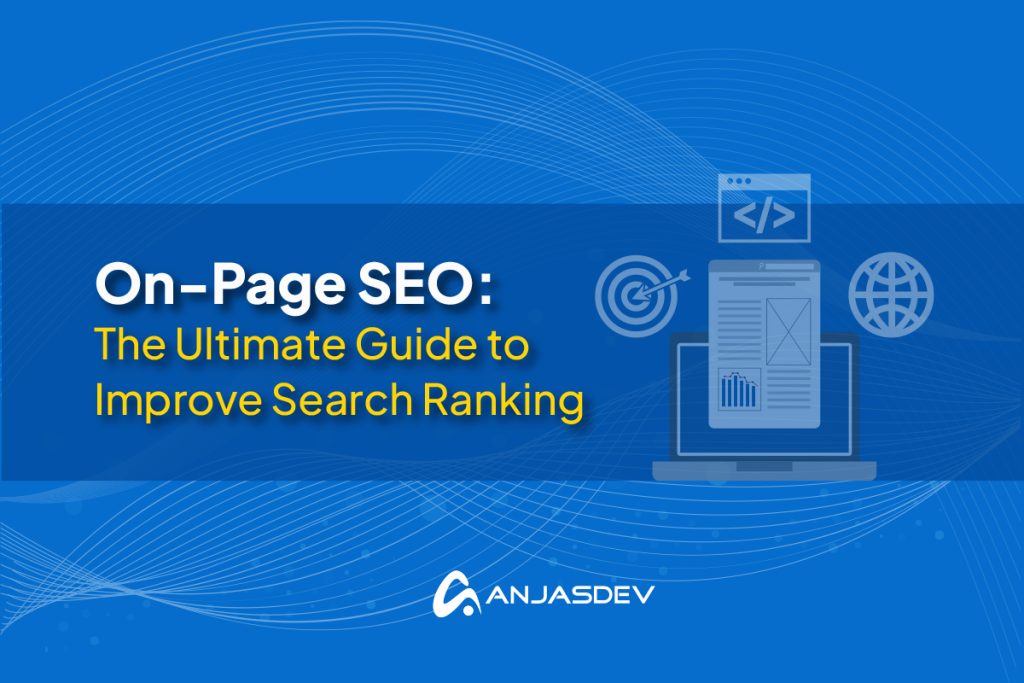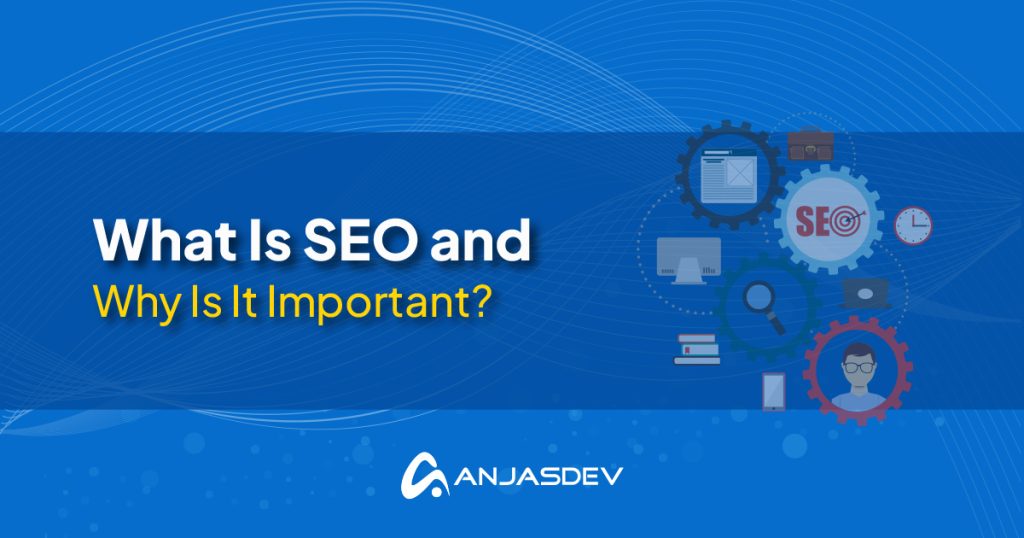
Great web results don’t just come out of thin air. If you’ve ever wondered how certain websites can be at the top of the search rankings repeatedly, that’s because they’ve invested in search engine optimization (SEO).
With 68% of all web browsing sessions starting on a search engine and SEO driving up to 1000 times more traffic than organic social media advertising, it’s an opportunity you must take advantage of implementing to its full potential [BrightEdge].
What is SEO?
SEO refers to how websites are optimized to perform on search engine results pages (SERPs). The better the SEO efforts, the higher the website or page will rank in users’ queries.
SEO involves following specific rules to ensure the search engine algorithm sees your website as helpful, reliable, and authoritative. This is done by:
- Conducting keyword research
- On-page optimization
- Providing high-quality, relevant content that answers common search queries
- Enhancing the user experience on your site through technical optimization.
If a search engine algorithm deems your website relevant or valuable to a particular topic or word, your page gets ranked higher on the SERPs. Users searching for that word or topic will find your website quickly. With 22.6% of all search engine traffic going to the top listings and only 4% clicking on the next page on Google or expanding the search for more results, getting SEO right to increase your chances of appearing in those coveted top spots is important.
The primary goal of SEO for businesses is to generate organic traffic to your site. It boosts your presence in relevant online search results to earn more leads, sales, and revenue.
How Does SEO Work?
Search engine optimization (SEO) is optimizing websites to rank higher in search engine results pages (SERPs) for relevant queries. The goal is to increase organic (non-paid) traffic to a website by making it more visible and attractive to search engines like Google, Bing, and others.
At its core, SEO involves understanding how search engines crawl, index, and rank web pages. Search engines use complex algorithms to determine the relevance and quality of a page for a given search query. These algorithms consider hundreds of ranking factors, both on-page and off-page. SEO attempts to target what these algorithms seek, making pages more likely to be highlighted as the top entries on SERPs.
Search engines constantly update their algorithms, so SEO is an ongoing process of staying up-to-date on best practices, analyzing performance metrics, and making continual optimizations. SEO works by making sure content remains relevant to search engines and, ultimately, that it is poised to meet users’ needs.
Why is SEO Important?
SEO is one of the highest-growing industries, with figures expected to hit $122 billion by 2028. Currently, 53% of all web traffic comes from organic searches, which SEO aims to maximize and take advantage of to its full effect.
However, it’s more complicated than implementing a few keywords and expecting the traffic to simply roll into your site. The world of SEO is competitive, and the search industry is fragmented between different sources. Instead of merely going to a search engine, many browsing and purchasing journeys now start in other places, including social media sites like TikTok and Instagram or online marketplaces like Amazon.
Speaking of Amazon, 61% of online shoppers will start their search there, making SEO and managing your Amazon listings crucial to increase customer visibility and relevance. And, for those businesses who don’t have an Amazon platform, it’s all the more essential to ensure your site targets consumers with effective SEO strategies.
Standing Out in a Crowded SERP
SERPs are also becoming increasingly competitive. Not only do businesses have to cope with boosted pay-per-click (PPC) advertisements for competitors, but searchers are faced with a wealth of information immediately. Things such as images, maps, sponsored listings, and even Google’s SGE (Search Generative Experience) tool aims, albeit with mixed reviews currently, to use AI to compile answers to users’ questions without them even needing to click a link at all can be barriers to getting your business’s voice heard.
To show you what users face daily, we’ve put a standard search into Google and talked you through it.
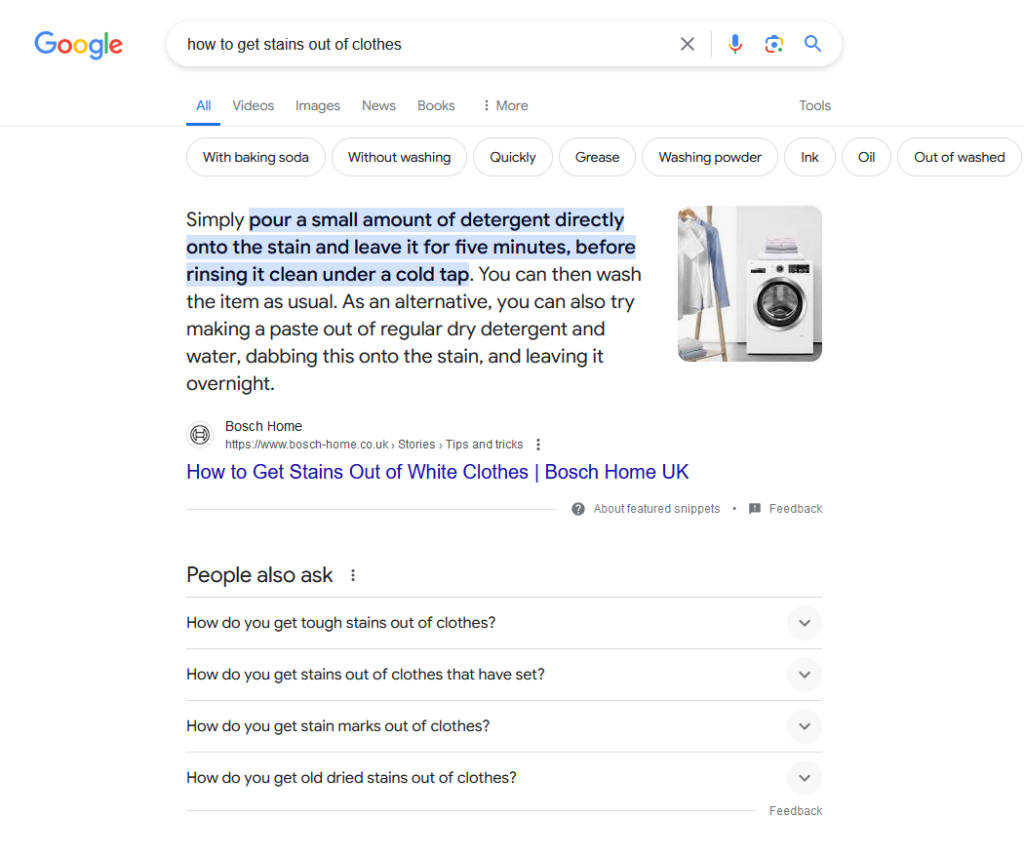
With this search query, you can see that Google already gives a wealth of information to the user. The featured snippet from the top search result is in large font, with the most pertinent information highlighted in blue. Above the snippet, additional keywords can be added to the search query, helping the user narrow down their search further. The added granularity also highlights the importance of specific long-tail keywords in effectively meeting users’ needs.
Underneath this, Google includes related searches in the “People also ask” section. The dropdowns for each will give yet another featured snippet answer and the link to change the search query.

Searches related to locations or businesses also bring map elements into play and are known as local pack results. The top Google My Business listings will be placed first on the map view before the user even scrolls down to search results for individual sites. This is why local SEO and keeping an up-to-date Google My Business profile are essential for visibility.
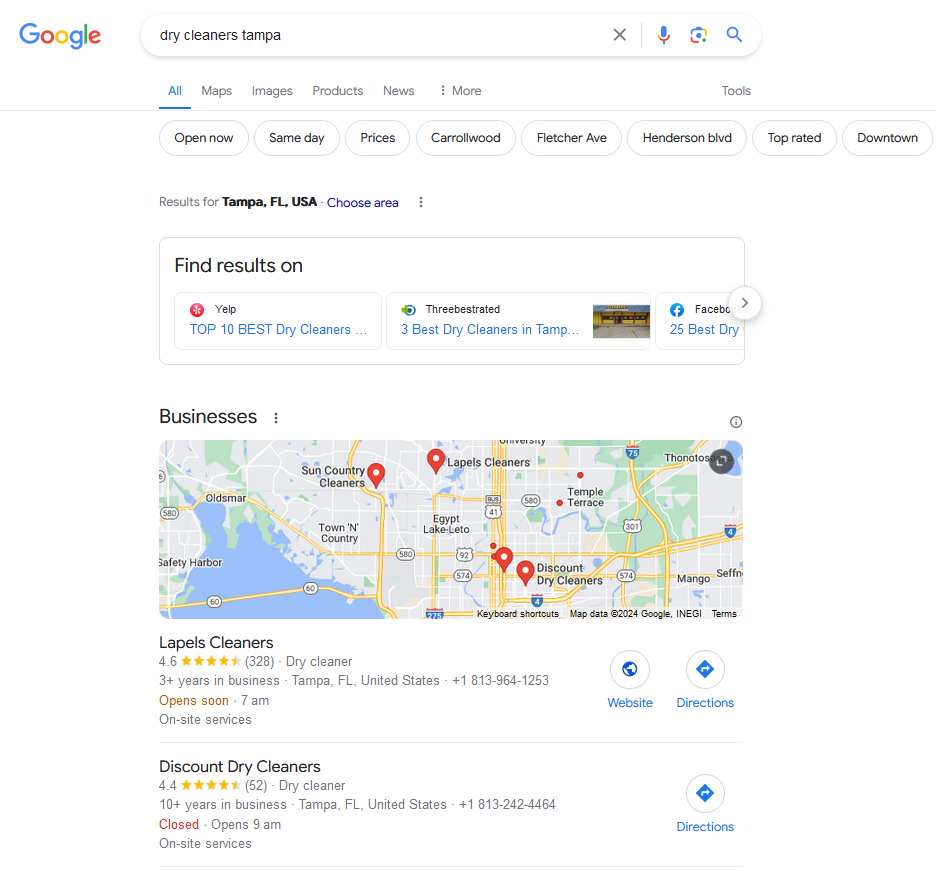
Some Google SERPs may gauge user intent. For example, it has inserted an image carousel of products at the top of the search results with this query:
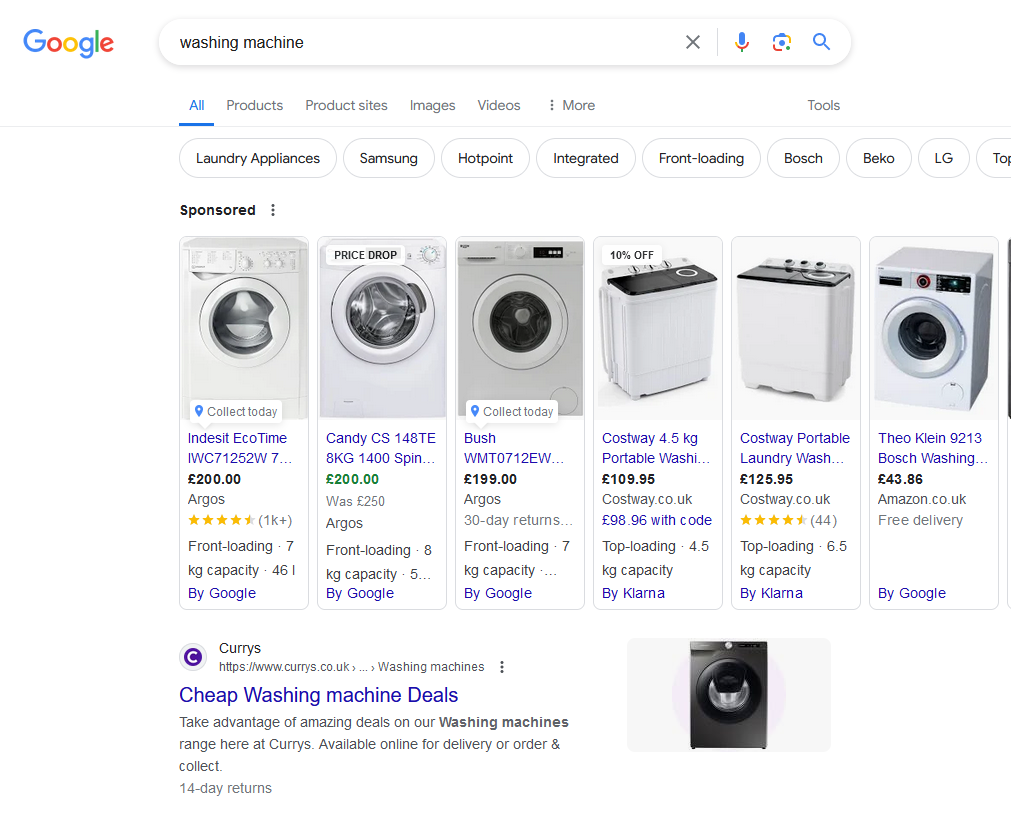
You’ll also notice that these products use PPC, as the carousel hosts sponsored products here. Being part of the sponsored carousel cannot be achieved with SEO.
Knowledge panels like the one below is displayed on the right-hand side of the SERP page. They usually appear when the user is searching for a company or person.
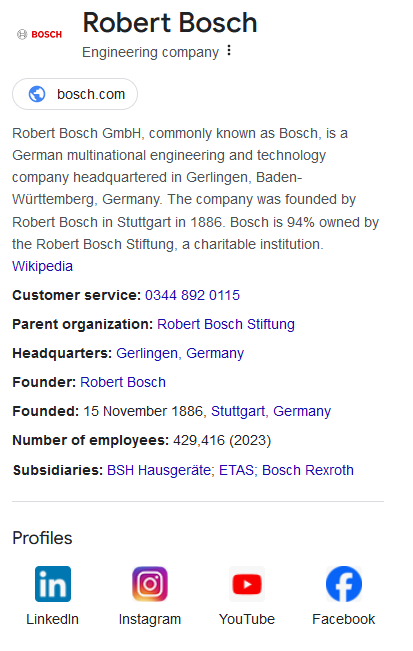
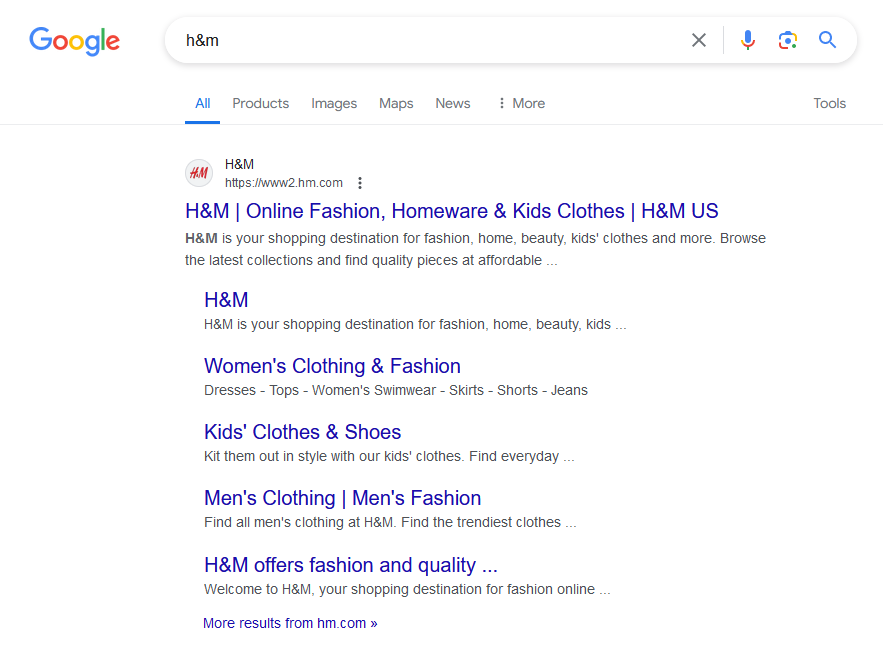
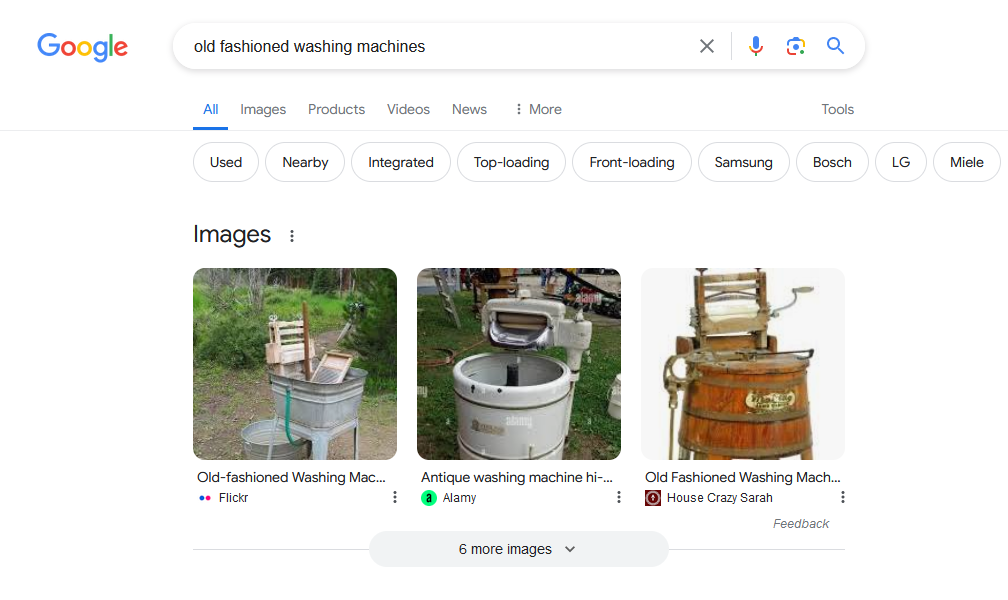

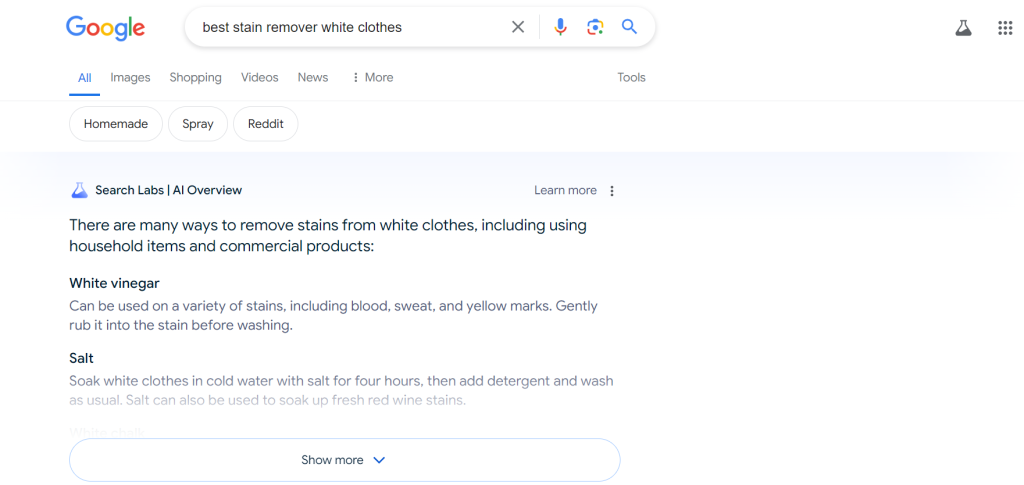
Now, think about trying to face all of those obstacles without SEO. The task would be impossible.
It may all seem doomed and gloomy, but SEO is still your valued asset regarding brand reach and visibility. Although there are challenges, a well-crafted SEO strategy can skyrocket traffic and lead to all-important conversions. We’ll talk about the benefits below.
What are the Benefits of SEO?
Search engine optimization (SEO) is crucial for any business or organization with an online presence. Here are some key benefits of SEO and why you should be implementing it:
Increased Website Traffic
SEO helps your website show up prominently for relevant search queries. The higher you rank, the more likely people find and visit your site from organic search results. Research has shown that organic search results account for 53% of all online web traffic, which you want to take advantage of.
Qualified Lead Generation
SEO doesn’t just drive more traffic but more targeted, higher-quality traffic. People who find your site via SEO are looking for what you offer, making them much more likely to be qualified leads. Marketers know that generating qualified leads can be challenging, but a comprehensive SEO strategy will account for 34% of their qualified leads. These leads are much more likely to turn into sales or conversions, directly benefiting your revenue.
Cost-Effective Marketing
SEO is a cost-effective way to drive website traffic and acquisition compared to other digital marketing channels. While paid ads require ongoing investment, SEO compounds long-term value and ROI by up to 200% and then some with a strong strategy in place.
Better User Experience
Following SEO best practices generally leads to a better overall user experience for visitors, including faster load times, mobile-friendliness, logical navigation, and higher-quality content. Sites optimized for use on phones see up to 74% return visits and are 67% more likely to secure a sale. On the other hand, if your site is slow, sluggish, and clunky, you’re throwing revenue away, with an estimated $2.6 billion being lost annually to this problem alone [Linearity].
Competitive Advantage
If your competitors aren’t optimizing for SEO effectively, you can outrank them and capture a higher share of relevant search traffic and consumer mindshare. On the other hand, if you are not using SEO to its full potential, the tables could also be turned on you!
Brand Credibility and Trust
SEO can significantly improve brand awareness and credibility by increasing a website’s visibility in search engine results. When a brand’s website ranks higher for relevant keywords, it gets exposed to more potential customers actively searching for those terms. This increased exposure builds brand recognition and associates the brand with the solution to users’ search queries. An optimized website with high-quality, informative content establishes the brand as a credible and authoritative source in its industry, further enhancing its reputation and trustworthiness among consumers and search engines.
Data for Insights
Search data, such as keyword rankings, search volumes, and user behavior metrics, offer a window into consumer demand, trends, and pain points. This data enables you to identify new product or service opportunities, optimize your offerings, and tailor marketing efforts to better align with customer needs.
Not only that, but SEO performance metrics like traffic, conversions, and engagement rates provide quantifiable data to measure the effectiveness of marketing initiatives and make data-driven decisions for future growth strategies, product development, and resource allocation, helping you to allocate your marketing, inventory, and R&D budgets more effectively for maximum ROI.
How Do Search Engines Work?
Search engines are complex systems designed to crawl, index, and retrieve relevant web pages based on user queries. The most popular is Google, with an 83.49% share of all global search queries conducted through its sites.
The process begins with web crawlers, automated bots that continuously scour the internet, following links and discovering new web pages. These pages are then indexed, which involves analyzing the content, extracting keywords, and storing this information in massive databases.
When a user enters a search query, the search engine’s algorithms work, sifting through these indexes to find the most relevant pages. This involves weighing various factors, such as the frequency and placement of keywords, the quality and authority of the website, and the user’s location and search history.
The algorithms then rank the results based on their perceived relevance, presenting the user with a list of web pages deemed most beneficial for their query. This will include organic search results gathered by SEO practices to create relevance, and usually, the top entries will be sponsored or ads that represent pay-per-click advertising, companies that have paid to have their page be more prominent in related search results.
Behind the scenes, machine learning and artificial intelligence play an increasingly important role, helping search engines understand natural language queries and provide more accurate and personalized results.
What's the Difference Between SEO and SEM?
SEO stands for search engine optimization, and SEM stands for search engine marketing. Here’s how they differ.
SEO’s primary goal is to increase organic traffic to your website. Organic traffic refers to users interacting and clicking through to your website without using paid advertising. SEO makes your pages as relevant as possible to users’ search queries by implementing keywords and building website authority and trustworthiness.
On the other hand, SEM is comprised of all efforts to increase traffic from search engines. SEO is one branch of the search engine marketing tree. The other branch is PPC, pay-per-click. Unlike the organic traffic from SEO efforts, PPC allocates the marketing budget towards paid adverts and placings on search engine results. For example, the results you might see on Google are outlined with a box that says “Ad” or “Sponsored” at the top.
So, SEO is SEM, but SEM isn’t just SEO. We hope this makes sense!
What are the Different Types and Components of SEO?
There are 3 different types of SEO that we talk about, with each one targeting a different part of your site. These are technical SEO, on-page SEO, and off-page SEO.
- Technical SEO involves optimizing a website’s technical aspects, such as its code, structure, and performance, to ensure it can be effectively crawled and indexed.
- On-page SEO refers to all optimizations made on the website’s user-facing pages, including keyword research and implementation, formatting, and content.
- Off-page SEO comprises all efforts made to gain mentions of the site on other web pages and platforms. This includes generating backlinks and local SEO.
This is just a snapshot of each type of SEO. Keep reading to get a more comprehensive overview of what they are and how they are implemented.
Technical SEO
Technical SEO refers to optimizing a website’s technical elements to improve its visibility and ranking on search engine results pages (SERPs). It involves optimizing site architecture, website speed, mobile-friendliness, indexing, crawlability, and structured data implementation. Some key aspects of technical SEO include:
- Site structure and URL structure optimization for improved crawlability and indexing. This helps search engines’ crawler bots to be able to find your site and understand its relevance.
- Website speed optimization through techniques like code minification, image compression, and leveraging browser caching. This is particularly important regarding increasing engagement and reducing bounce-back rates, which negatively affect your appearance on SERPs.
- Mobile-friendliness and responsive design ensure a seamless experience across devices and increase accessibility, a core part of the Google Quality Rater Guidelines.
- Implementing structured data markup (Schema.org) to enhance rich snippet visibility.
- Fixing technical issues like broken links, duplicate content, and crawl errors.
- Optimizing for Core Web Vitals and other user experience signals.
On-Page SEO
On-page SEO involves optimizing various elements on a website’s pages, such as the HTML source code, content, images, headings, meta tags, and internal linking structure, to make them more search engine-friendly. Key aspects include:
- Optimizing titles and meta descriptions for relevance and click-through rates.
- Using headings and formatting to improve content structure and readability. This is particularly important when structuring text for mobile devices with limited screen space.
- Incorporating target keywords strategically in content, URLs, image alt text, and other on-page elements. When carrying out this step, it is important to understand the user intent behind each keyword and use them effectively. For example, an informational blog will likely use keywords geared toward informational user intent. In the same vein, long-tail keywords help to mimic the syntax of user search queries on a more exact level.
- Ensuring content is high-quality, comprehensive, and provides value to users. If the content meets the users’ needs or provides the answer, they are looking for quickly, they will click off the page, increasing your bounce-back rate and showing Google that your site is less relevant to searchers.
- Using internal linking strategically to guide users and search engines to other relevant areas of your site increases the time users interact with your business.
- Implementing image optimization and video transcripts for multimedia content to enhance loading times, increase accessibility, and search engine relevance.
Off-Page SEO
Off-page SEO focuses on building authority, credibility, and trust signals that search engines use to evaluate a website’s relevance and popularity. Key aspects of off-page SEO include:
- Link building, where the aim is to foster high-quality backlinks from reputable and relevant websites, which act as “votes” for a site’s authority. In simple terms, this means that another website has chosen to link to your content, increasing credibility and trustworthiness in the eyes of both users and search engines.
- Earning brand mentions and citations increases online brand awareness and credibility even when your website is not explicitly linked.
- Social media marketing also falls under the umbrella of off-page SEO. Promoting content builds your brand’s voice and increases visibility and shares from the online community.
- The Google Business Profile allows local SEO to be built and targeted to people in your area. Companies can gain valuable quotations, reviews, and features in local business listings by adding their business details and keeping their business listing updated with up-to-date information and images.
- Influencers can also increase your off-page reach. By having people endorse your products and services, a level of trustworthiness is gained, as well as helping you reach more specific and targeted audiences.
- The more coverage of your company and website, the better. Effective off-page SEO strategies will leverage the expertise of their personnel, securing interviews and providing their professional viewpoints in guest posts on other prominent blogs and online publications. This also feeds strongly into Google’s E-E-A-T criteria, standing for Experience, Expertise, Authority, and Trustworthiness.
Can I Do SEO Myself?
It is possible to implement SEO strategies independently, although the best results will always come from an experienced and dedicated SEO agency. Some fundamental SEO changes you can easily make for yourself include:
- Understanding your current SEO performance using tools like the Google Search Console.
- Perform competitor research to understand keywords and strategies used by other sites.
- Research keywords relevant to your products and services.
- Optimize your existing content to include keywords in your research and ensure it meets user intent. For example, how quickly can the user find their answer if it is an informational piece?
- Analyze your site’s technical performance, including load times, how easy it is to navigate, and clean up messy code.
- Keep updated on the latest search engine updates and SEO trends by regularly reading SEO blogs like ours at AnjasDev.
If this all seems like too much work, the team at AnjasDev has your back. Experienced SEO specialists, we’re here to do the heavy lifting to boost your online presence so you can focus on what matters most: your business.
Get Started with SEO
In a highly digital world, SEO is a vital digital marketing tool for boosting traffic to your website and ensuring that interested users see you. Although it can seem daunting at first, understanding how SEO can work within your business and industry becomes more accessible to implement effectively.
If in doubt, you can always enlist the services of an SEO agency like AnjasDev. With digital marketing agencies and SEO services increasing organic traffic by 50% year-on-year, a solid, professional SEO strategy is worth investing in. There are plenty of other benefits to digital marketing agencies, too: why not read our guide on why businesses need an experienced digital marketing partner next?
FAQs
Search Engine Optimization (SEO) plays a crucial role in digital marketing. It involves optimizing a website’s content, structure, and technical aspects to rank higher in search engine results pages (SERPs) for relevant keywords. Effective SEO strategies improve a website’s visibility, driving more organic traffic and potential customers. It encompasses on-page optimization (content, titles, meta descriptions), off-page optimization (link building, social media presence), and technical SEO (site speed, mobile-friendliness). SEO is an ongoing process that requires continuous monitoring and adaptation to search engine algorithms and user behavior changes. A well-executed SEO strategy is essential for businesses to establish an online presence and attract their target audience.
This varies depending on the scope of the work needing to be undertaken as well as the size of the company. SEO services can easily range from $100 up to $10,000 and beyond. Suppose you are interested in purchasing SEO services. In that case, it is well worth scheduling a consultation with the digital marketing agency of your choice to find a price estimation based on your circumstances as a business.
SEO is an ongoing process, so you can only partially say you are completely finished! That being said, some aspects, such as technical tweaks and keyword optimization, may be quicker to implement than others.

